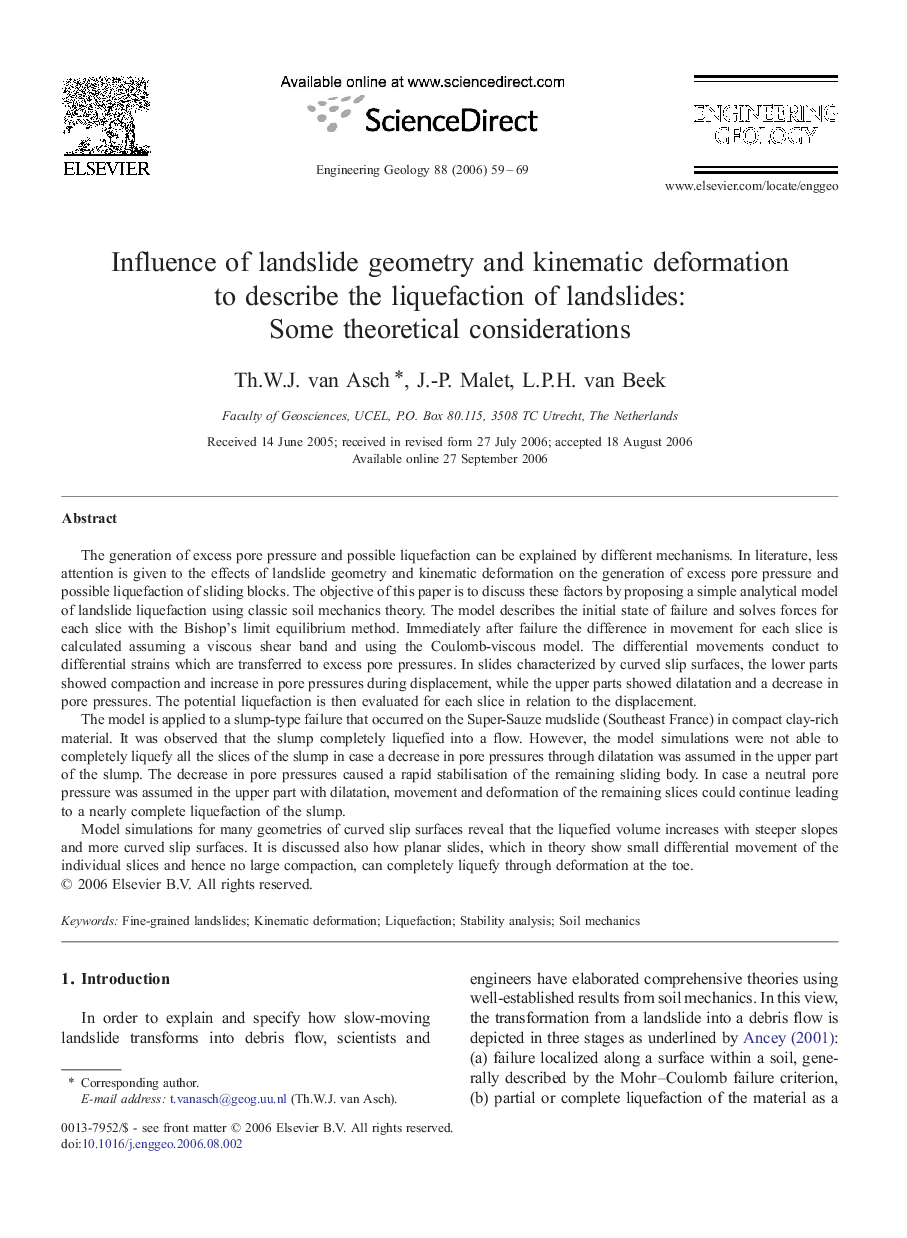| کد مقاله | کد نشریه | سال انتشار | مقاله انگلیسی | نسخه تمام متن |
|---|---|---|---|---|
| 4744896 | 1641914 | 2006 | 11 صفحه PDF | دانلود رایگان |

The generation of excess pore pressure and possible liquefaction can be explained by different mechanisms. In literature, less attention is given to the effects of landslide geometry and kinematic deformation on the generation of excess pore pressure and possible liquefaction of sliding blocks. The objective of this paper is to discuss these factors by proposing a simple analytical model of landslide liquefaction using classic soil mechanics theory. The model describes the initial state of failure and solves forces for each slice with the Bishop's limit equilibrium method. Immediately after failure the difference in movement for each slice is calculated assuming a viscous shear band and using the Coulomb-viscous model. The differential movements conduct to differential strains which are transferred to excess pore pressures. In slides characterized by curved slip surfaces, the lower parts showed compaction and increase in pore pressures during displacement, while the upper parts showed dilatation and a decrease in pore pressures. The potential liquefaction is then evaluated for each slice in relation to the displacement.The model is applied to a slump-type failure that occurred on the Super-Sauze mudslide (Southeast France) in compact clay-rich material. It was observed that the slump completely liquefied into a flow. However, the model simulations were not able to completely liquefy all the slices of the slump in case a decrease in pore pressures through dilatation was assumed in the upper part of the slump. The decrease in pore pressures caused a rapid stabilisation of the remaining sliding body. In case a neutral pore pressure was assumed in the upper part with dilatation, movement and deformation of the remaining slices could continue leading to a nearly complete liquefaction of the slump.Model simulations for many geometries of curved slip surfaces reveal that the liquefied volume increases with steeper slopes and more curved slip surfaces. It is discussed also how planar slides, which in theory show small differential movement of the individual slices and hence no large compaction, can completely liquefy through deformation at the toe.
Journal: Engineering Geology - Volume 88, Issues 1–2, 22 November 2006, Pages 59–69